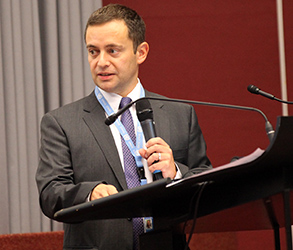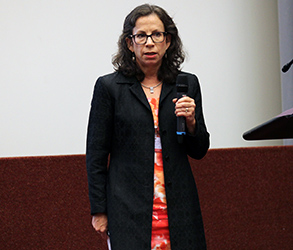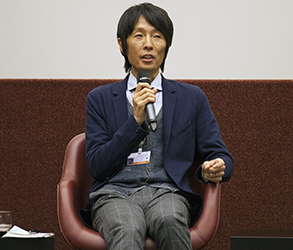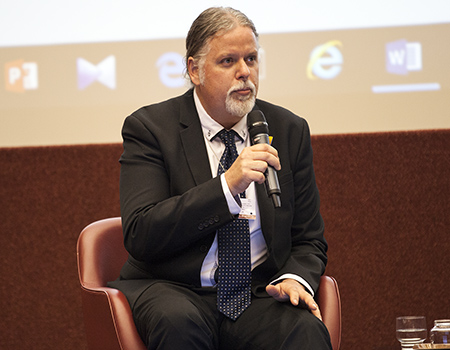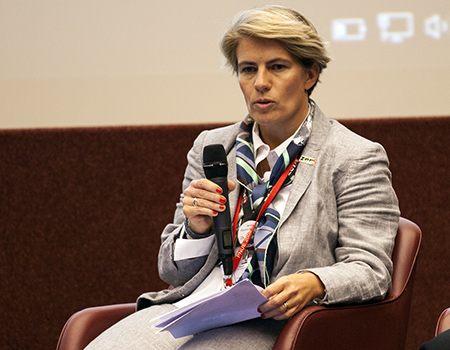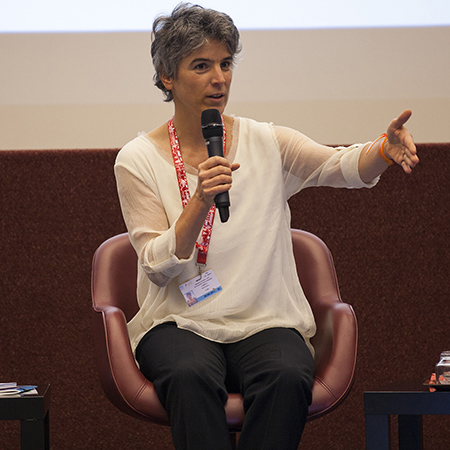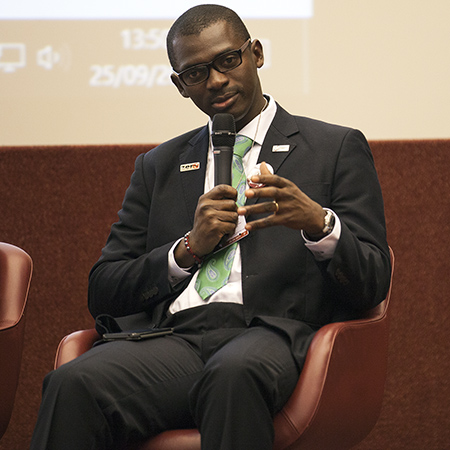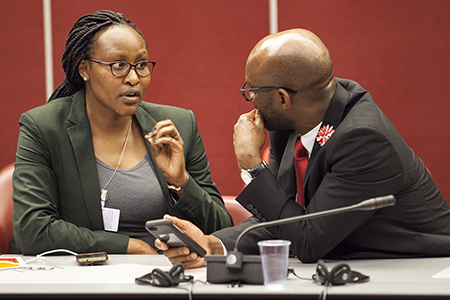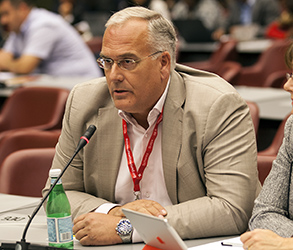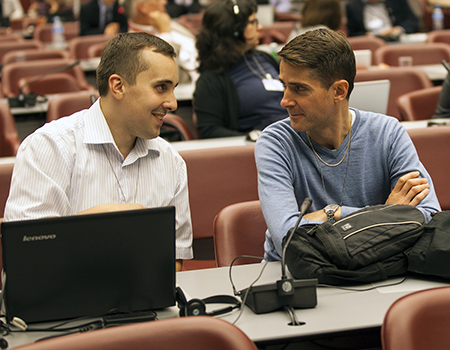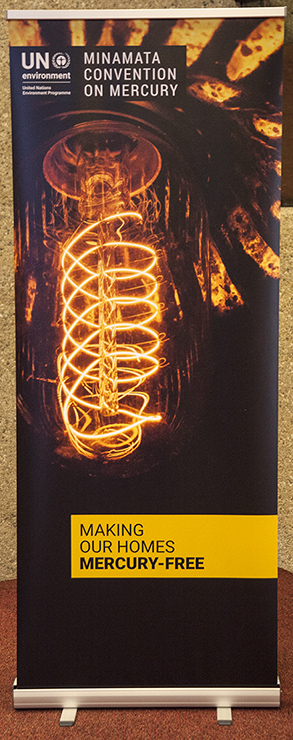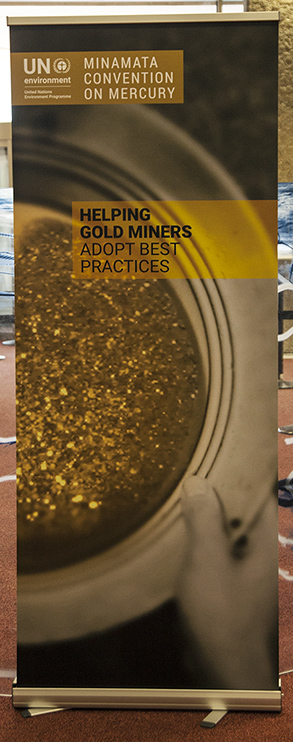Summary
Ludovic Bernaudat, UN Environment, opened the thematic session on land, which looked at how the provisions of the Minamata Convention will help to bring about cleaner technologies for artisanal and small-scale gold mining (ASGM), environmentally sound approaches to mercury waste, options for managing contaminated sites, and possibilities for moving away from the use of mercury in products and processes.
Marianne Bailey, United States Environment Protection Agency and Co-chair of the Global Mercury Partnership Advisory Group, moderated the session. Noting that mercury is both an element and a commodity with a century’s long tradition, she stressed the need for alternatives in processes and products using mercury, as well as unintentional releases, especially air emissions, that impact land. Bailey noted that mercury’s impacts are both local and global, and translate into health effects. She then posed questions to the panelists, including on how to: ensure the availability of viable, cost-effective and efficient alternatives to products and processes containing mercury; mitigate the socio-economic effects of the AGSM sector; formalize the informal and unregulated sectors that use mercury to more effectively address heath and environment issues; identify, secure and prevent mercury contaminated sites; manage mercury waste in an environmentally sound manner; and reduce mercury releases through waste separation and recycling programmes at the local level.
On ensuring the availability of viable and cost-effective alternatives, Gabi Eigenmann, UN Industrial Development Organization, stressed that access to alternatives is key, emphasizing the need to look at the cost of transition. She underscored the need to test alternatives and feasibility tests, ensuring that one hazardous substance is not replaced by another hazardous substance. Eigenmann stressed policy and regulations, a life cycle approach and providing support to ensure sustainable transitions.
Elena Lymberidi-Settimo, European Environmental Bureau and Zero Mercury Working Group (ZMWG), said phasing out mercury-added products can reduce global mercury use by one third. She outlined a document elaborated by the ZMWG containing a check list and recommendations for phasing out mercury-added products, including, inter alia: engagement of relevant ministries and stakeholders; conducting inventories; legal analysis on regulations pertaining to products containing mercury; capacity building including training and laboratory capacity; setting methods to establish mercury levels in products; and addressing illegal transboundary trade on mercury-added products. Lymberidi-Settimo stressed the widespread availability of convention compliant products. She said stakeholders include manufacturers, traders, importers and distributors of mercury-added products.
On the socio-economic effects of gold mining, Bally Dominique Kpokro, Centre Africain pour la Santé Environnementale, said National Action Plans (NAPs) could address, among others: nomadism; licensing of miners, administrative streamlining of licensing procedures; community building among artisanal miners; development of new market models, valorization of silver found in artisanal gold; and educational curricula for artisanal miners to take advantage of their existing skills.
Eigenmann said that artisanal miners currently lose USD 5 billion a year due to lack of direct access to market and prices. She emphasized miner-to-miner training, including with miners from other countries, as an effective method to introduce alternatives. Lymberidi-Settimo highlighted the role of NGOs in consultations with miners.
On identifying, securing and preventing mercury-contaminated sites, Lee Bell, International POPs Elimination Network (IPEN), highlighted the need for community engagement and taking into account the social aspect when addressing contaminated sites. He said technical solutions for rapid identification of soil pollution allow for rapid screening, inventories and prioritization of resources and remedial action. Bell explained that full remediation of contaminated sites is very complex, and referred to an IPEN publication on identification, management and remediation of contaminated sites. He stressed the importance for COP to make a gesture towards developing guidance on contaminated sites and remediation.
On mercury waste management, Shunichi Honda, UN Environment, highlighted the difficulties in segregating mercury in waste given the usually small amounts, particularly at the household level, and suggested incentives may help to improve collection. He recommended integrating mercury management into existing waste management systems, which may include informal systems. Eigenmann suggested combining mercury waste management with e-waste management. Bell noted that large amounts of contaminated soil will result from contaminated site remediation. He stressed that thresholds should be established to avoid those materials to escape through loopholes.
On formalizing informal sectors to address health and environment impacts, Eigenmann emphasized the need for patience and for highlighting the direct benefits of phasing out mercury. She said regional approaches are necessary to address transboundary effects. Eigenmann noted the need for access to financing. Kpokro stressed education, skills and incentives for formalization. He said formalization is not against artisanal miners but to improve economic systems.
Following the panel’s interventions, there was an open discussion with the public. Issues addressed included, inter alia: benefits to the community from added value chain from ASGM; self organization by artisanal miners; the role of miner cooperatives in adopting alternative technologies; the role of service and equipment providers in formalization efforts; methods for collection and disposal of dental amalgam; management and valorization of mining tailings; remediation of ASGM sites; and stabilization of mercury waste.
IISD Reporting Services, through its ENB+ Meeting Coverage, is providing daily web coverage from the Thematic Sessions at Mercury COP1.
Photos by IISD/ENB+ | Mike Mizurakis
For photo reprint permissions, please follow instructions at our Attribution Regulations for Meeting Photo Usage Page.
From L-R: Lee Bell, IPEN; Shunichi Honda, UN Environment; Gabi Eigenmann, UN Industrial Development Organization; Elena Lymberidi-Settimo, European Environmental Bureau, Zero Mercury Working Group; and Bally Dominique Kpokro, Centre Africain pour la Santé Environnementale
Ludovic Bernaudat, UN Environment
Marianne Bailey, United States Environmental Protection Agency, Co-chair of the Global Mercury Partnership Advisory Group
Shunichi Honda, UN Environment
Lee Bell, IPEN
Elena Lymberidi-Settimo, European Environmental Bureau, Zero Mercury Working Group
Gabi Eigenmann, UN Industrial Development Organization
Bally Dominique Kpokro, Centre Africain pour la Santé Environnementale
Kirsten Dales and Mikhaela Meznaric, Canadian International Resources and Development Institute (CIRDI)
Nancy Meigara, Kenya, with James Mulolo, Africa Institute
David Simone, International Academy of Oral Medicine and Toxicology (IAOMT)
Franziska Hirsch, UN Economic Commission for Europe (UNECE)
Robert Jan Dubbeldam, BMT Mercury Technology International

